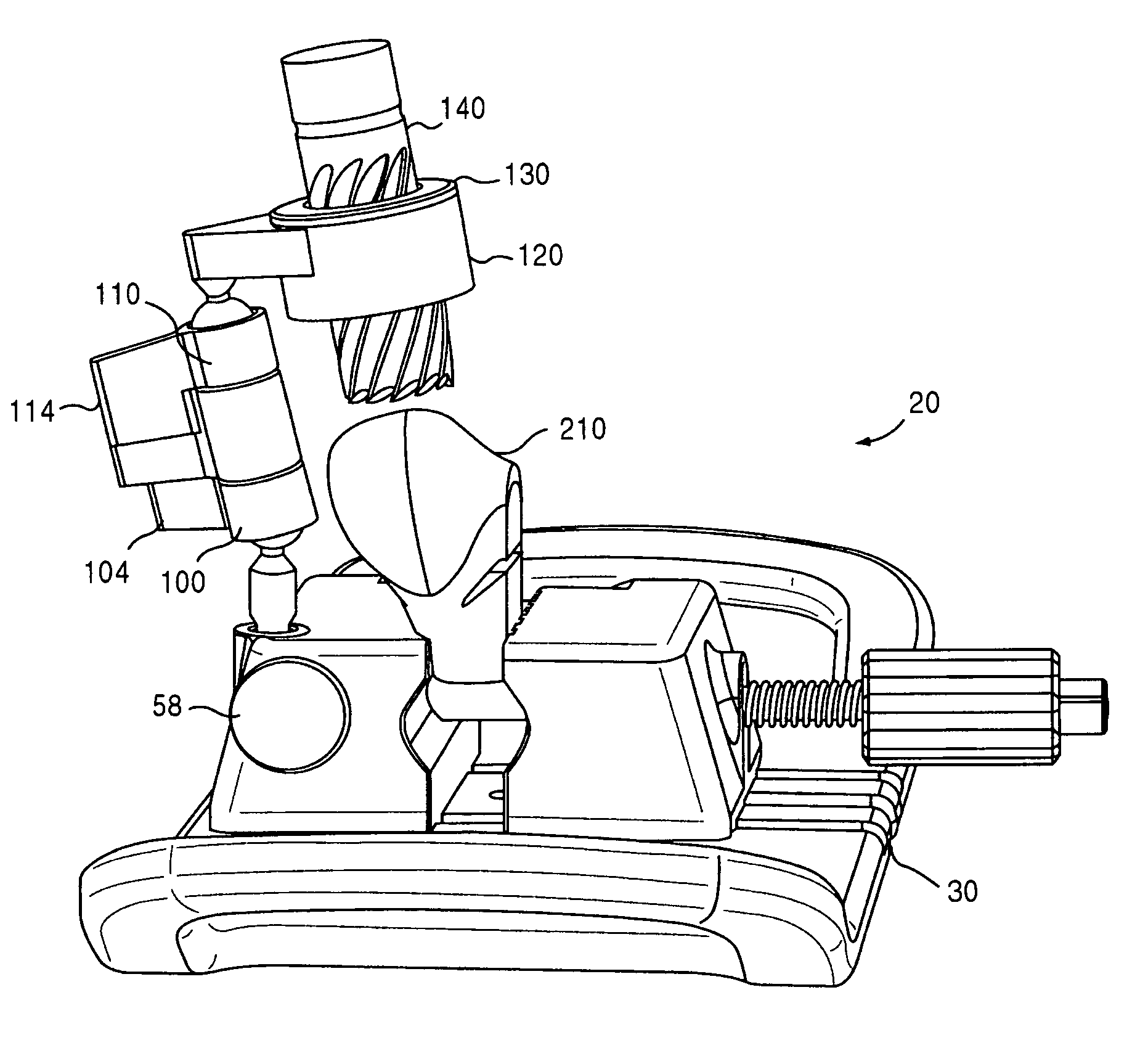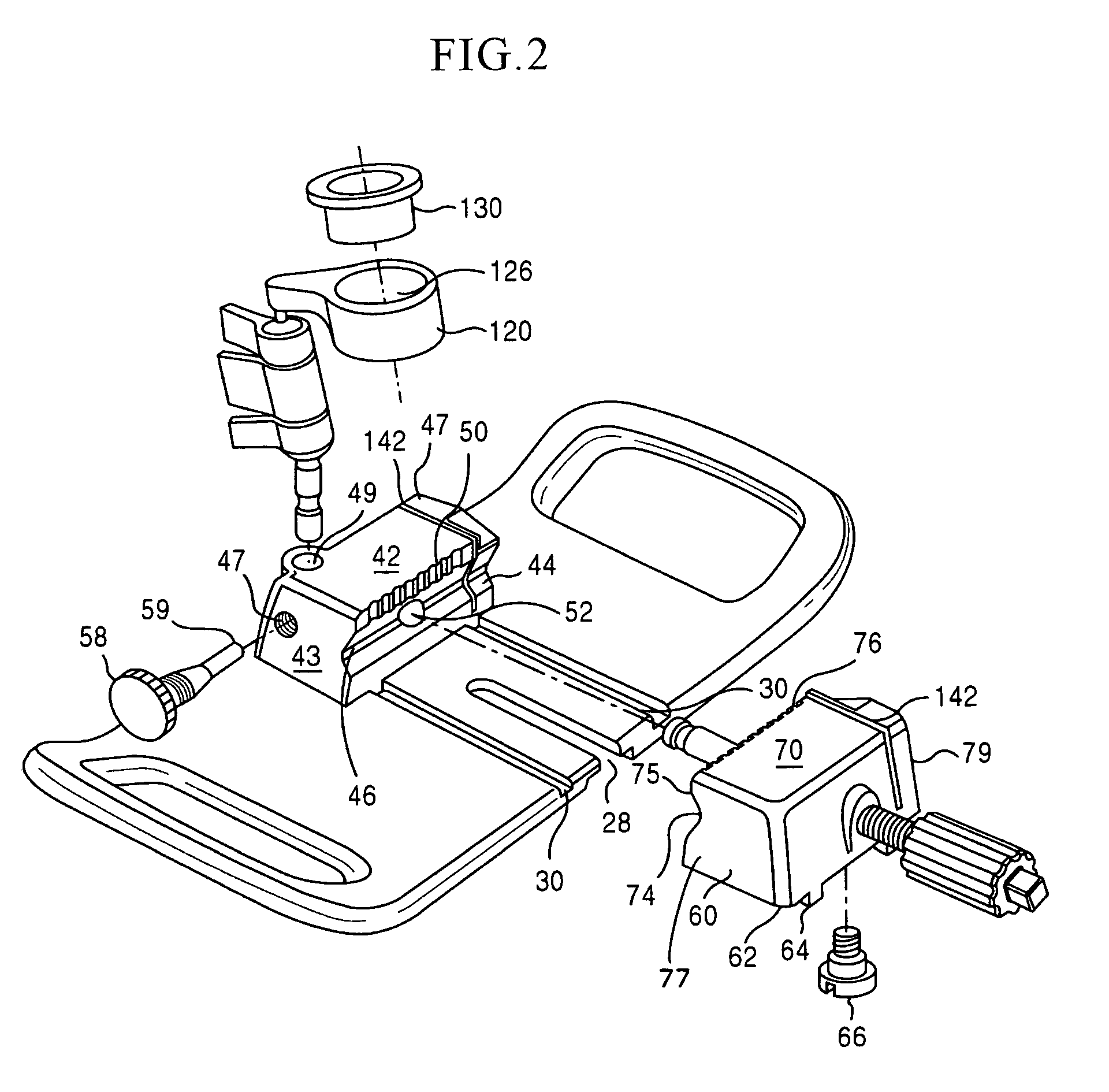Osteochondral allograft cartilage transplant workstation
a technology of allografts and workstations, applied in the field of articular chondral defects surgical treatment, can solve the problems of articular cartilage lesions generally not healing, pain or severe joint movement, and limited hyaluronic acid cartilage regeneration, etc., to achieve accurate core lengths for implants, easy use by surgeons, and easy cleaning and sterilization
- Summary
- Abstract
- Description
- Claims
- Application Information
AI Technical Summary
Benefits of technology
Problems solved by technology
Method used
Image
Examples
Embodiment Construction
[0042]The term “tissue” is used in the general sense herein to mean any transplantable or implantable tissue such as bone.
[0043]The terms “transplant” and “implant” are used interchangably to refer to tissue (xenogeneic or allogeneic) which may be introduced into the body of a patient to replace or supplement the structure or function of the endogenous tissue.
[0044]The terms “autologous” and “autograft” refer to tissue or cells which originate with or are derived from the recipient, whereas the terms “allogeneic” and “allograft” refer to tissue which originate with or are derived from a donor of the same species as the recipient. The terms “xenogeneic” and “xenograft” refer to tissue which originates with or are derived from a species other than that of the recipient.
[0045]The present invention is directed towards a cartilage repair implant forming workstation. The preferred embodiment and best mode of the invention is shown in FIGS. 1, 2, 3-7, and 8-10. In the inventive workstation...
PUM
 Login to View More
Login to View More Abstract
Description
Claims
Application Information
 Login to View More
Login to View More - R&D
- Intellectual Property
- Life Sciences
- Materials
- Tech Scout
- Unparalleled Data Quality
- Higher Quality Content
- 60% Fewer Hallucinations
Browse by: Latest US Patents, China's latest patents, Technical Efficacy Thesaurus, Application Domain, Technology Topic, Popular Technical Reports.
© 2025 PatSnap. All rights reserved.Legal|Privacy policy|Modern Slavery Act Transparency Statement|Sitemap|About US| Contact US: help@patsnap.com



